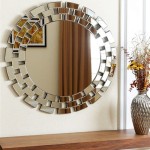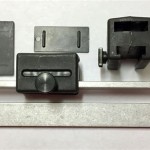How To Screen Mirror From Laptop to Sony Bravia
Screen mirroring, also known as screen casting, allows users to wirelessly display the content from a laptop onto a television screen. This functionality is particularly useful for presentations, viewing photos and videos, or simply enjoying streaming content on a larger display. Sony Bravia televisions, known for their picture quality and smart features, support various screen mirroring technologies, enabling seamless connectivity with compatible laptops. This article provides a comprehensive guide on how to screen mirror from a laptop to a Sony Bravia television, outlining different methods, troubleshooting tips, and considerations for optimal performance.
Before beginning the screen mirroring process, it is essential to ensure both the laptop and the Sony Bravia television are connected to the same Wi-Fi network. This is a fundamental requirement for most wireless screen mirroring technologies. Furthermore, verify that the screen mirroring feature is enabled on the television. This can typically be found within the television's settings menu, often under sections like "Network," "Display," or "Input." The specific menu options and naming conventions might vary slightly depending on the Bravia television model but the underlying principle remains the same: the television must be configured to receive screen mirroring connections.
Using Miracast for Screen Mirroring
Miracast is a wireless display standard that allows devices to connect directly, without the need for a Wi-Fi network. While connecting to the same Wi-Fi network is generally recommended for a smoother experience, Miracast can operate independently. Many modern laptops and Sony Bravia televisions support Miracast, making it a convenient option for screen mirroring.
To initiate Miracast screen mirroring, the first step involves accessing the "Action Center" on a Windows laptop. This can be done by clicking the notification icon in the system tray, typically located in the lower-right corner of the screen. Within the Action Center, look for the "Connect" button. Clicking on this button will prompt the laptop to scan for available wireless displays.
Simultaneously, the Sony Bravia television must be prepared to receive the Miracast connection. This usually involves navigating to the screen mirroring or input settings on the television. The specific terminology may vary, but the goal is to activate the television's Miracast receiver, making it discoverable by the laptop. The television may display instructions on the screen, guiding the user through the connection process.
Once the laptop detects the Sony Bravia television, it will appear in the list of available displays within the Action Center. Select the television from the list, and the laptop will attempt to establish a Miracast connection. A PIN code may be displayed on the television screen, which needs to be entered on the laptop to confirm the connection. This ensures that only authorized devices can mirror content to the television.
After the connection is established, the laptop screen will be mirrored onto the Sony Bravia television. The user can then adjust display settings, such as resolution and scaling, to optimize the viewing experience. It's important to note that Miracast performance can be affected by factors such as distance between devices, interference from other wireless devices, and the capabilities of the hardware. Experimenting with different positions and settings may be necessary to achieve optimal results.
If issues arise during the Miracast connection process, several troubleshooting steps can be taken. First, ensure that both the laptop and the Sony Bravia television have the latest software updates installed. These updates often include bug fixes and performance improvements that can address compatibility issues. Second, restart both devices to clear any temporary glitches that may be preventing the connection. Finally, verify that the Wi-Fi Direct setting is enabled on both the laptop and the television. Wi-Fi Direct is a prerequisite for Miracast to function correctly.
Another common issue during Miracast connections involves graphic drivers on the laptop. Outdated or corrupted graphic drivers can often lead to screen mirroring failure. Updating the graphic drivers to the latest version can often resolve this issue. The process of updating graphic drivers typically involves visiting the website of the laptop manufacturer or the graphic card manufacturer (e.g., NVIDIA, AMD) and downloading the appropriate drivers for the specific operating system and hardware configuration.
Utilizing Google Chromecast for Screen Mirroring
Google Chromecast offers another method for screen mirroring from a laptop to a Sony Bravia television. While Chromecast primarily functions as a streaming device, it also supports screen mirroring capabilities, particularly through the Google Chrome web browser. This approach requires a Chromecast device connected to the Sony Bravia television.
To begin, ensure the Chromecast device is properly connected to the Sony Bravia television via an HDMI port and powered on. The Chromecast device needs to be connected to the same Wi-Fi network as the laptop. Install the Google Chrome browser on the laptop if it is not already installed.
Open the Google Chrome browser and navigate to the website or application that the user wishes to mirror. In the upper-right corner of the Chrome browser window, click the three vertical dots (the "Customize and control Google Chrome" menu) and select "Cast." This will prompt Chrome to search for available Chromecast devices on the network.
Select the Chromecast device connected to the Sony Bravia television from the list of available devices. The Chrome browser will then mirror the content of the current tab onto the television screen. Additionally, the user can choose to cast the entire desktop, rather than just a single tab. To do this, click the "Source" dropdown menu in the Cast dialog box and select "Cast desktop."
The "Cast desktop" option allows the user to mirror everything that is displayed on the laptop screen, including applications, documents, and other content. This is useful for presentations or when the user wants to share a wider range of content with others.
Adjusting the casting quality can improve the viewing experience. Within the Cast dialog box, click the "Quality" dropdown menu and select the desired quality level. Higher quality settings will consume more bandwidth but will result in a sharper and more detailed image on the television screen. If the network connection is weak or unstable, lowering the quality setting may improve performance.
To stop screen mirroring, click the "Stop casting" button in the Chrome browser, or click the "Cast" icon in the toolbar and select "Stop." This will disconnect the laptop from the Chromecast device and end the screen mirroring session.
Troubleshooting Chromecast screen mirroring issues often involves checking the network connection, verifying that the Chromecast device is properly configured, and ensuring that the Chrome browser is up to date. Restarting the Chromecast device and the laptop can also resolve temporary glitches. Additionally, ensure that any firewall or security software on the laptop is not blocking the Chrome browser from accessing the network.
Using HDMI Cable for Direct Connection
While wireless screen mirroring offers convenience, a direct connection via an HDMI cable provides a reliable and high-quality method for displaying content from a laptop to a Sony Bravia television. This approach eliminates the potential for wireless interference and ensures a stable connection, making it ideal for demanding applications such as gaming or video editing.
To connect the laptop to the Sony Bravia television using an HDMI cable, locate the HDMI ports on both devices. The television typically has multiple HDMI ports, labeled HDMI 1, HDMI 2, etc. The laptop may have one or more HDMI ports, or in some cases, a Mini HDMI or Micro HDMI port, requiring an adapter. Connect one end of the HDMI cable to the HDMI port on the laptop and the other end to an HDMI port on the television.
Once the physical connection is established, the next step involves selecting the correct HDMI input on the Sony Bravia television. Use the television remote control to navigate to the "Input" or "Source" menu. Select the HDMI input that corresponds to the HDMI port where the laptop is connected. The television screen should then display the laptop's desktop.
The laptop may automatically detect the connected display and adjust its display settings accordingly. However, in some cases, the user may need to manually configure the display settings. On a Windows laptop, this can be done by right-clicking on the desktop and selecting "Display settings." In the "Display settings" window, the user can configure settings such as resolution, orientation, and multiple display options.
The "Multiple displays" option allows the user to choose how the laptop and the television displays are used. The available options include "Duplicate these displays," "Extend these displays," and "Show only on [display number]." "Duplicate these displays" mirrors the laptop screen onto the television. "Extend these displays" treats the television as an extension of the laptop desktop, allowing the user to move windows and applications between the two screens. "Show only on [display number]" disables the laptop screen and displays content only on the television.
Selecting the appropriate display setting depends on the user's specific needs. For presentations, "Duplicate these displays" is often the most convenient option. For multitasking, "Extend these displays" can be useful. For watching movies or playing games, "Show only on [display number]" may provide the best performance.
If the image on the television screen is not displaying correctly, check the resolution settings on the laptop. The resolution should be set to the native resolution of the television for optimal image quality. Additionally, ensure that the refresh rate is set appropriately. A refresh rate of 60 Hz is typically recommended for most televisions.
Audio output may also need to be configured. By default, the audio may continue to play through the laptop speakers after connecting to the television via HDMI. To change the audio output to the television speakers, right-click on the speaker icon in the system tray and select "Open Sound settings." In the "Sound settings" window, select the television as the output device.
Using an HDMI cable provides a straightforward and reliable method for screen mirroring from a laptop to a Sony Bravia television. It offers the best picture and sound quality and eliminates the potential for wireless interference. This approach is particularly well-suited for applications that require a stable and high-performance connection.

How To Mirror Screen Cast Your Laptop Sony Bravia Tv Via Wi Fi
How To Display The Image From Windows 10 Computer On Tv Using Screen Mirroring Feature Sony
How To Display The Image From Windows 10 Computer On Tv Using Screen Mirroring Feature Sony

How To Mirror Laptop Sony Tv

How To Mirror Mac Macbook Pro Sony Tv

Sony Bravia Tv How To Display Pc Screen On With Hdmi Mirroring

How To Mirror A Laptop Tv The Tech Edvocate

How To Mirror Screen Cast Your Laptop Sony Bravia Tv Via Wi Fi

How To Mirror Mac Macbook Pro Sony Tv

2024 Screen Mirroring Sony Tv With Android Iphone Laptop








